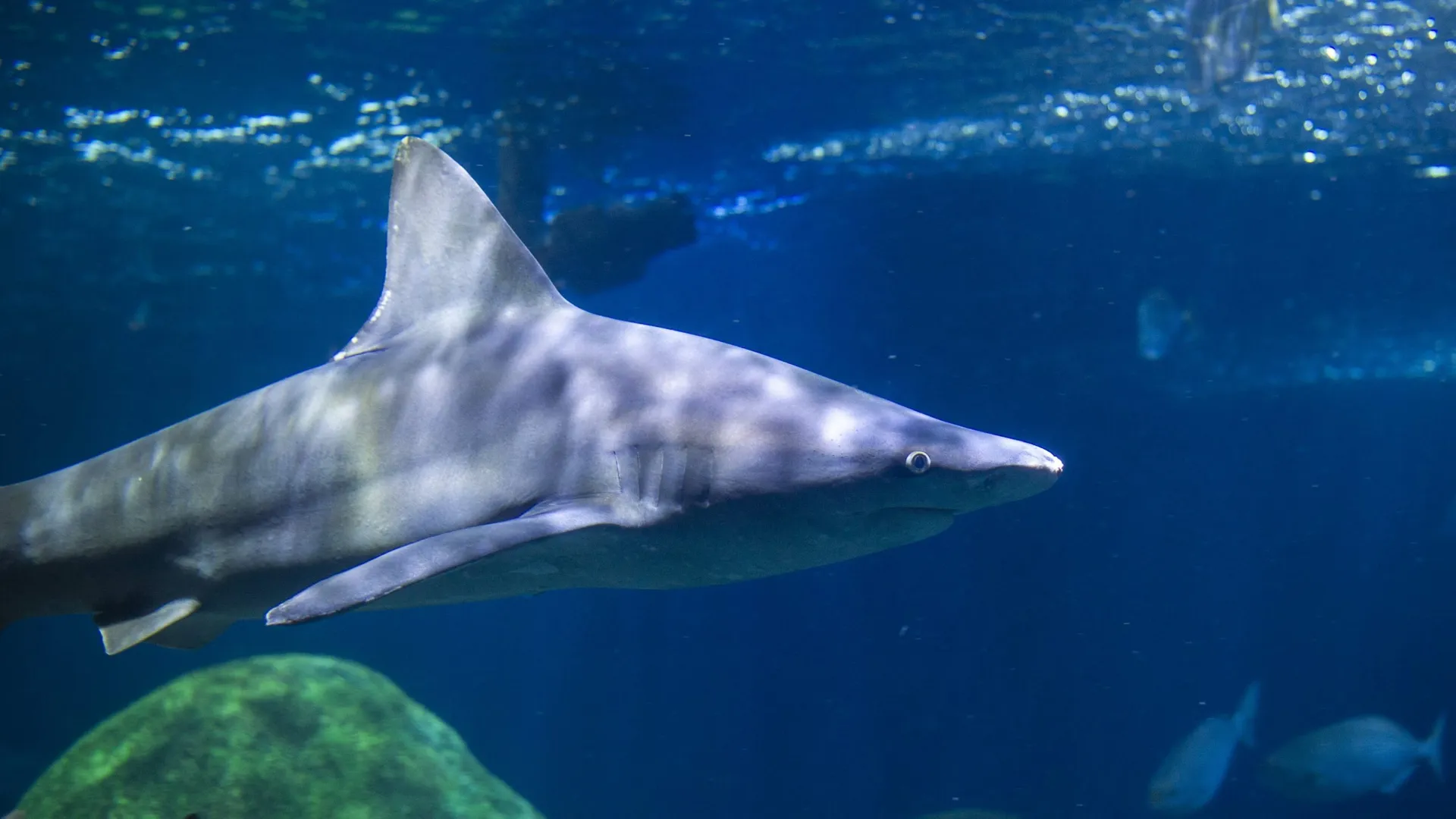In late September, aquarists observed erratic behavior by a female Sandbar Shark in the Secret Reef exhibit during feeding. The shark’s condition was brought to the attention of the Aquarium’s veterinarian, Dr. Chris Keller, who suspected that an underlying gastrointestinal issue was responsible.
Under close observation by her caretakers, the shark appeared to moderately improve over the following days before declining again. This pattern of improvement and decline continued for the next week.
On Sept. 30, however, the shark’s condition rapidly deteriorated. That evening, Aquarium animal care specialists and dive staff carefully relocated the shark to a nearby isolation pool for further assessment. Upon observing a continued worsening of her symptoms — and after consultation with Dr. Keller — the shark was humanely euthanized using an intravenous solution.
A necropsy was performed on the shark to determine the cause of her condition and to rule out an environmental issue that could pose a danger to the other animals in the Secret Reef. During this procedure, the shark was found to have ingested plastic debris that probably contributed to her decline. Tissue samples have been sent to a pathology lab at the University of Connecticut for further analysis to rule out other potential causes.
In 2019, this same shark presented similar, but less intense, symptoms indicating gastrointestinal distress. At the time, her condition improved after she successfully passed a quantity of material that was found to contain plastic wrap.
Until this incident, plastic wrap had been used as a sanitary cover for fresh seafood during feedings. Following this incident, the Aquarium enacted a ban on all plastic in sections of the Ocean Journey building with access to the Secret Reef. The exhibit was then scoured by divers for additional plastic debris. None was found during this search, nor was any discovered during daily cleanings and maintenance conducted in the exhibit in the years following.


This shark was collected off the coast of Florida and relocated to the Aquarium concurrent with the opening of the Ocean Journey building in 2005. When she arrived in Chattanooga, the shark had reached sexual maturity, which occurs in female Sandbar Sharks between the ages of 13 and 15 years old. At the time of her death, she was estimated to be 30 to 32 years old.
“This shark was in exceptional shape for her age,” says Aquarium Chief Operating Officer Jackson Andrews. “But whether in human care or in the wild, Sandbar Sharks begin to decline after they’re about 30 years old.”
During her time at the Aquarium, this individual and the other sharks in the Secret Reef and Stingray Bay touch tank have served as important ambassadors to the public. Whether through dive presentations or merely swimming through their exhibits, they help to dispel misconceptions about the aggression of sharks and to showcase the powerful grace with which these marine predators can navigate aquatic environments.
In human care, the Aquarium’s older Sandbar Sharks and Sand Tiger Sharks have thrived thanks to carefully monitored diet and consistent access to veterinary care. Several individuals, including the female Sandbar, have lived into their early 30s, well in excess of the 15-year and 21-year median life expectancy of wild male and female Sandbar Sharks, respectively.
The Aquarium’s care specialists and aquarists are the animals’ first and best line of defense. Through close daily observation, these caretakers are among the first to notice subtle behavioral changes that may indicate an underlying condition in need of veterinary attention.
In the wild, however, many animals’ natural instinct — especially predators — is to hide injuries or illness as a defensive measure. For animals in human care, this desire to disguise weakness makes it difficult to identify a condition when it is at an early, intervenable stage. By the time this shark’s condition became evident, she would not have responded to medical or surgical efforts to save her, Dr. Keller says.
“From a professional standpoint, I don’t think this animal could have been observed more closely than it was by our team,” he says. “With fish species, especially, they don’t want to appear to be weak or vulnerable to predators. We had no indication the shark was doing poorly or feeling sick until she was already terminal.
“In the interest of this shark’s quality of life, we feel strongly that this was the right choice to make.”
From a professional standpoint, I don’t think this animal could have been observed more closely than it was by our team.
